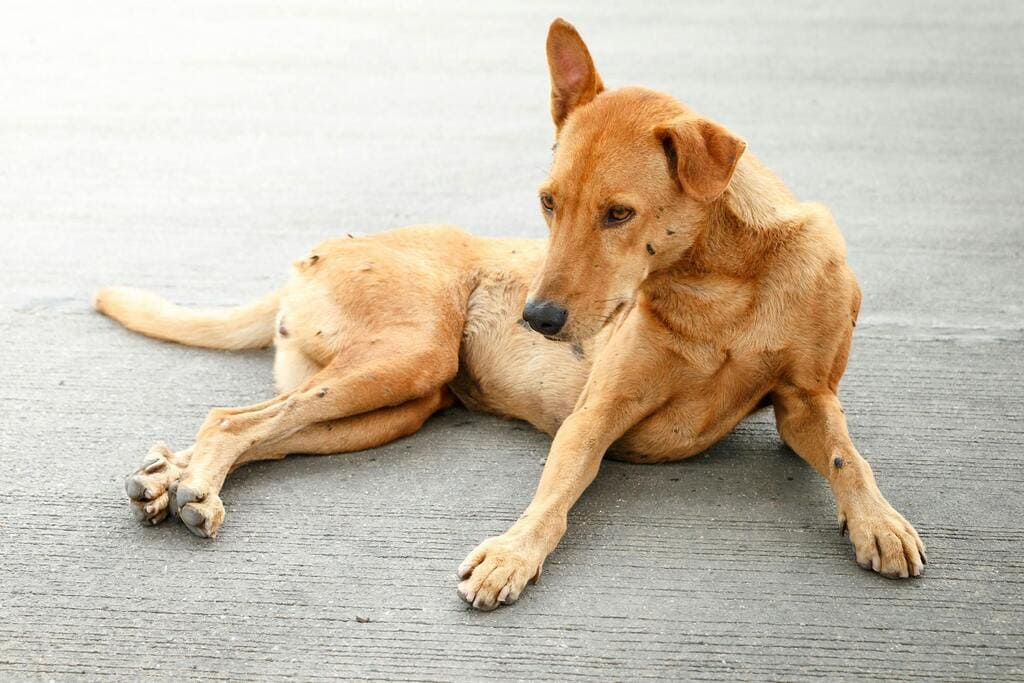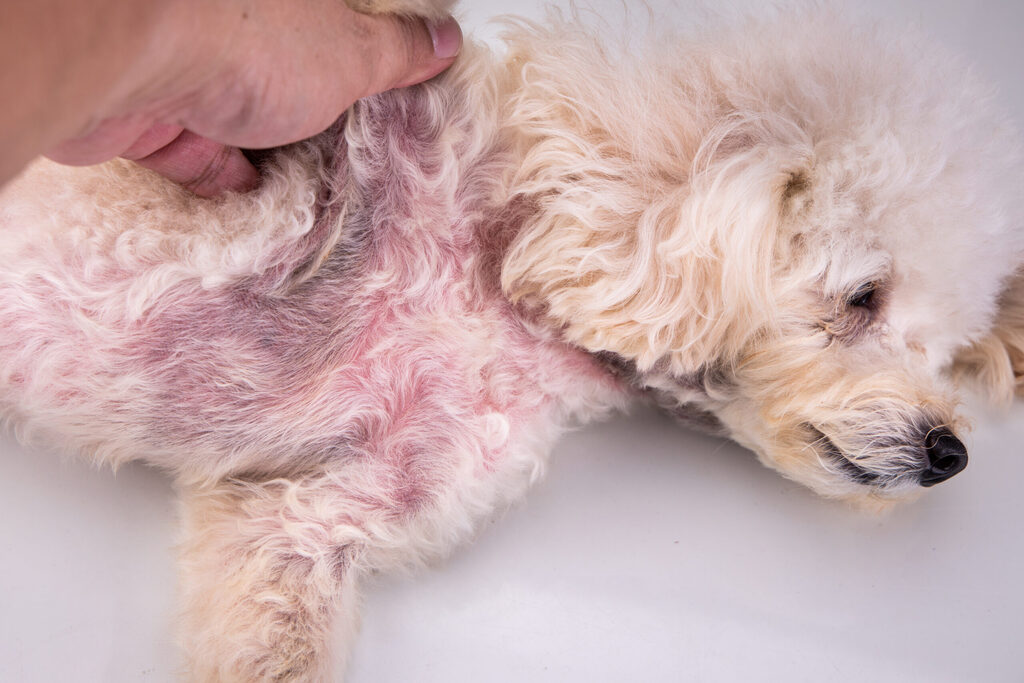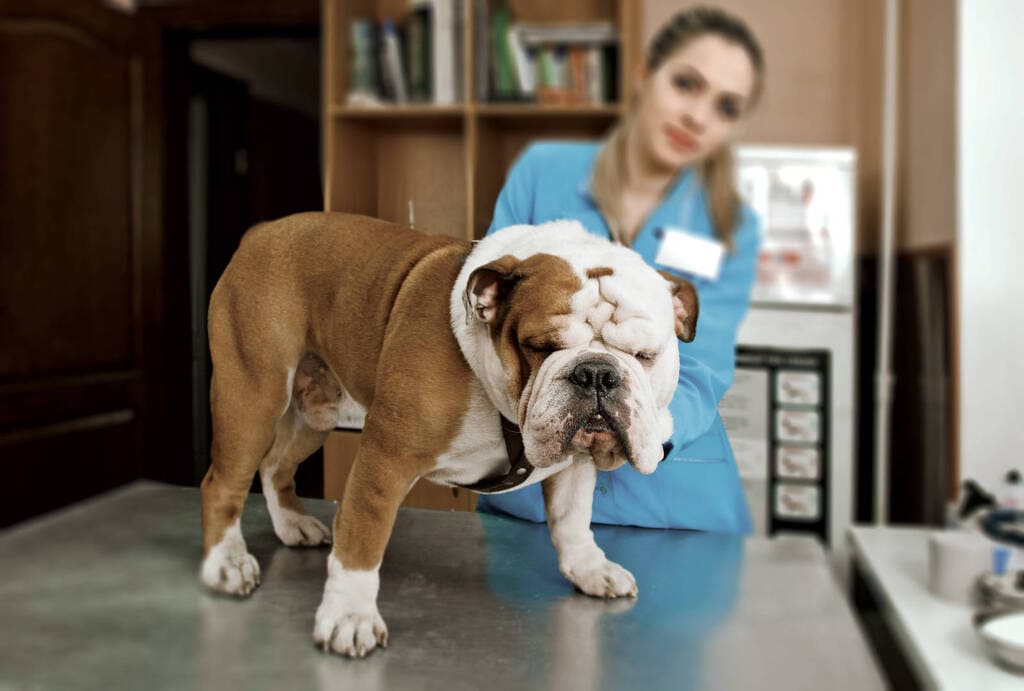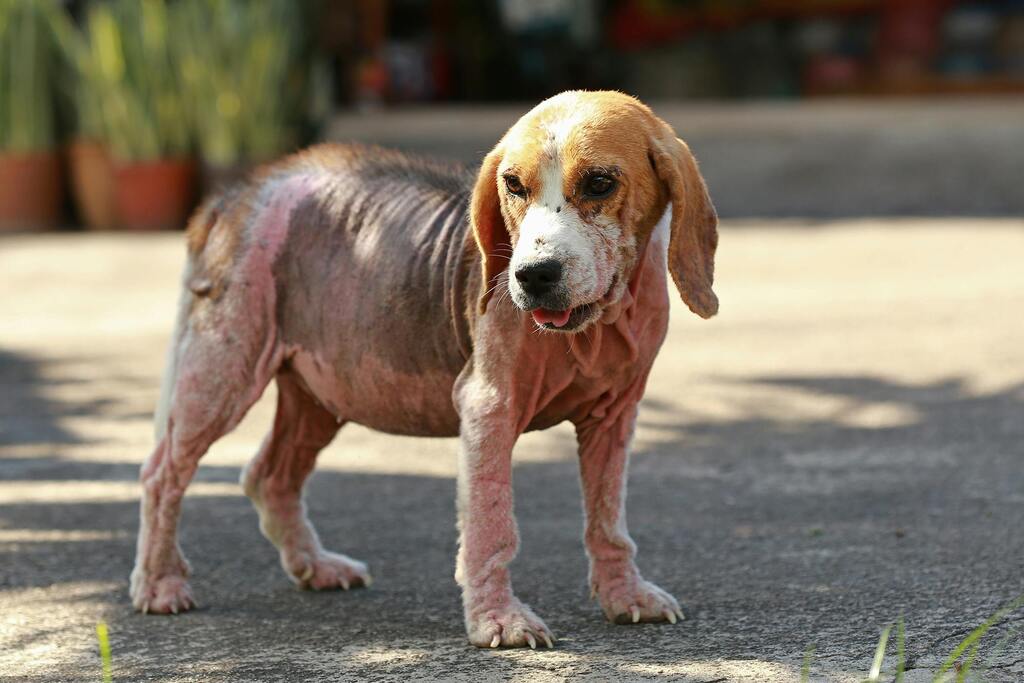
Let’s take a look at canine skin health with our guide on Pyoderma in dogs. Find the nuances of this common skin condition, exploring its definition, effects, and root causes. Learn about effective treatment methods and preventive measures to keep your furry friend’s skin in good condition. Whether you’ve had pets before or not, it’s important to know about Pyoderma and why dogs suffer from them.
What is Pyoderma in Dogs
Pyoderma means “pus in the skin,” and it often happens in dogs due to inflammation, infection, or cancer.
Most of the time, bacterial infections are the main cause of pyoderma. These infections are usually shallow and happen because of other issues like allergies or parasites. When otherwise healthy animals get pyoderma, it usually goes away completely with the right antibiotics. Areas of the skin that are warm and moist, like lip folds, facial folds, armpits, feet, and neck folds, tend to have more bacteria and are more likely to get infected. Pressure points, like elbows, can also get infected from repeated pressure. Any skin problem that changes the usually dry skin to a wetter environment can lead to too much bacteria on the skin.
Types of Pyoderma in Dogs

Lets take a look at the different type of Pyoderma in dogs.
1. Superficial Pyoderma:
Superficial pyoderma affects the outer skin layers, causing pustules, papules, and surface-level sores. It’s often linked to bacteria like Staphylococcus pseudintermedius and Staphylococcus aureus.
2. Deep Pyoderma:
Penetrating deeper layers, deep pyoderma leads to more severe lesions and abscess formation, often need special testing to identify the bacterial strain..
3. Fold Pyoderma:
Dogs with skin folds like Bulldogs or Shar-Peis can develop pyoderma in creased areas because of moisture and friction. This condition requires special care to prevent and treat. Keeping these areas clean and dry is important to avoid infections. Regular check ups with a veterinarian can help monitor and manage any skin issues that may arise.
Understanding Pyoderma: Causes and Contributing Factors

Bacterial Invasion:
Opportunistic bacteria, especially Staphylococcus species, gaining access to the skin is the primary cause of pyoderma. Identification of the specific bacterial pyoderma in dogs is pivotal for effective treatment.
Underlying Conditions:
Allergies, hormone problems, and pre existing skin conditions create a helpful environment for pyoderma. Addressing these factors is essential for long-term management.
Environmental Factors:
Humidity, environmental allergens, and poor grooming practices contribute to pyoderma onset. Maintaining a clean living space and proper hygiene practices are essential to prevention.
Symptoms of Pyoderma

1. Pruritus (Itching):
Constant scratching because of irritated skin is a common sign. Scratching a lot can make the problem worse, so it’s important to get help early.
2. Erythema and Inflammation:
Redness and inflammation characterize pyoderma affected areas. Monitoring changes in skin color aids in early detection.
3. Pustules and Lesions:
Pus-filled pustules and small lesions are common signs of pyoderma. Regular skin inspections aid to identify these visible symptoms.
4. Hair Loss:
Hair loss can happen in one spot or all over, so it’s important to act quickly to protect the coat.
Is Pyoderma in Dogs Contagious?

Although pyoderma itself is not highly contagious, people can transmit the bacteria responsible for the condition. Practicing good hygiene and to prevent close contact between infected and healthy dogs are crucial.
Identifying Bacterial Infections
Staphylococcus pseudintermedius, a prevalent bacterium, is often responsible for bacterial pyoderma. Diagnostic tests help locate the specific bacteria, enabling targeted treatment.
Antibiotic Resistance
In some cases, antibiotic resistant strains may complicate treatment. Veterinarians may need to adjust the approach based on bacterial sensitivity testing.
How to Treat Pyoderma in Dogs

1. Veterinary Examination:
Veterinarians conduct a thorough physical examination, inspecting the affected areas and checking overall skin health.
2. Skin Scraping:
Perform skin scraping to collect samples for microscopic examination, aiding in identifying bacterial involvement.
3. Bacterial Culture:
Culturing bacterial samples helps determine the specific strain causing the infection, guiding antibiotic selection for optimal treatment.
4. Antibiotic Therapy:
Veterinarians prescribe targeted antibiotics based on the identified bacteria and their sensitivity. Completing the full course of antibiotics is crucial to prevent recurrence.
5. Topical Treatments:
In addition to systemic antibiotics, veterinarians may recommend topical treatments, such as medicated shampoos or ointments, to address localized symptoms.
Pyoderma in Dogs: Home Treatment

Pyoderma in dogs treatment includes:
1. Topical Antiseptic Solutions:
Cleanse affected areas with vet-recommended antiseptic solutions containing ingredients like chlorhexidine. Regular cleaning helps prevent bacterial proliferation.
2. Medicated Shampoos:
Use mild, hypoallergenic shampoos prescribed by your veterinarian to maintain proper skin hygiene. Regular baths contribute to overall skin health.
3. Dietary Adjustments:
Adopt a balanced, nutrient-rich diet tailored to your dog’s specific needs. Proper nutrition supports the immune system, aiding in the body’s ability to combat infections.
4. Omega-3 Fatty Acid Supplements:
Incorporate omega-3 fatty acid supplements into your dog’s diet to reduce inflammation and promote skin healing. Consult your veterinarian for appropriate dosage.
Conclusion
With an understanding of pyoderma, dog owners can actively participate in managing this prevalent skin condition. From recognizing types and causes to veterinary diagnosis and implementing advanced home treatments, proactive care is essential. Always talk to a vet for accurate diagnosis and treatment plans to keep your dog healthy and happy.
In Case You Missed It!











